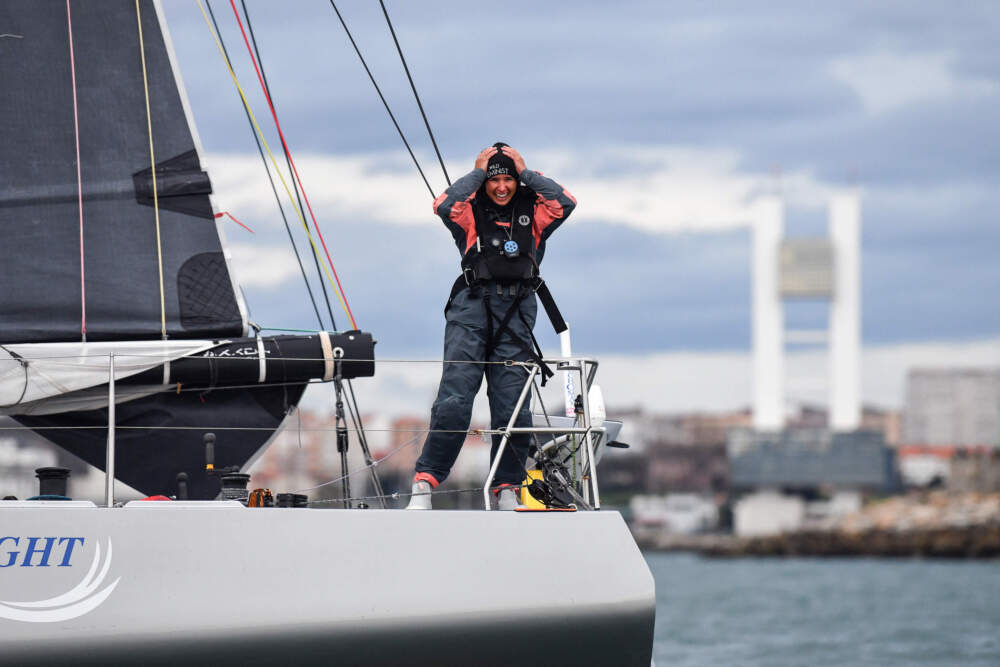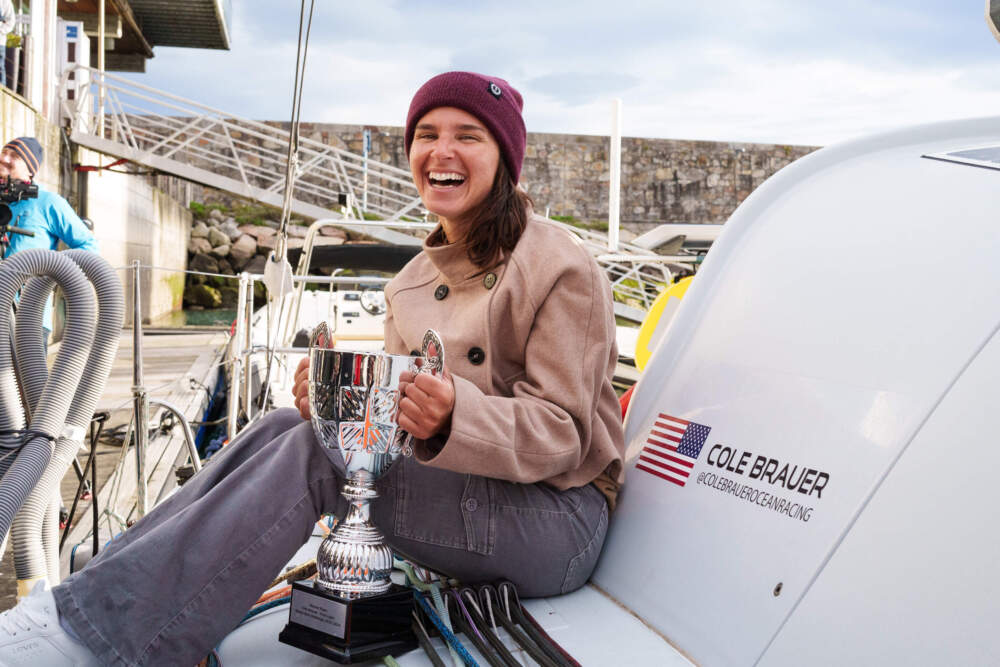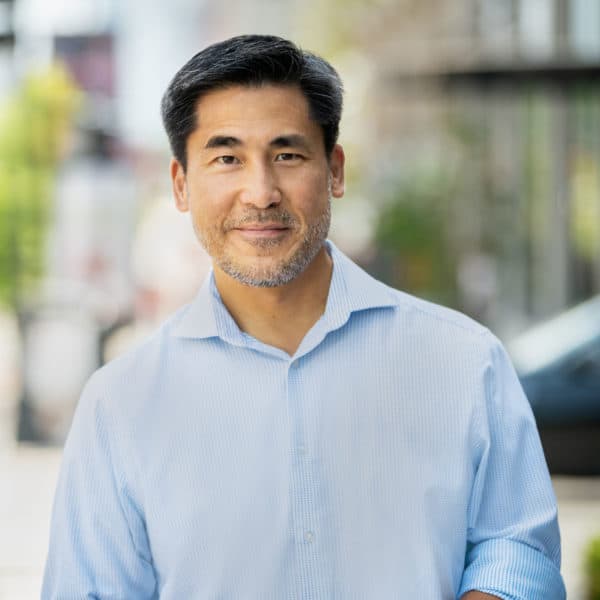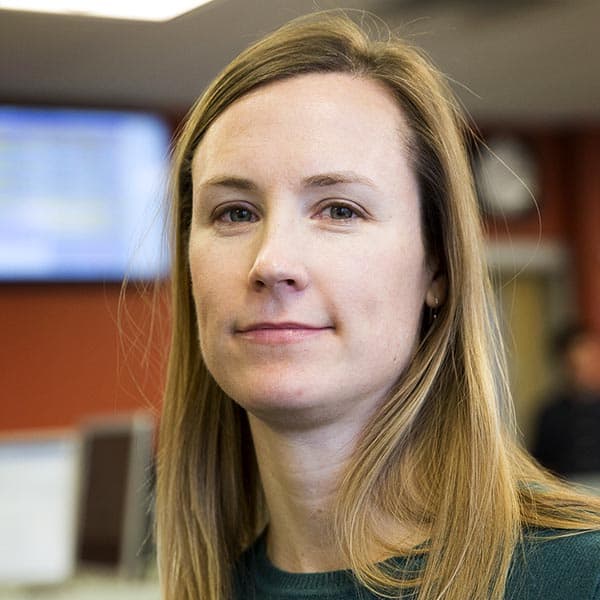Advertisement
Cole Brauer is the first American woman to sail nonstop, alone around the world
Resume
Fewer than 200 people have ever sailed solo non-stop around the world. Cole Brauer is the only American woman among them.
The 29-year-old completed the 30,000-mile journey last week when she stepped off her 40-foot sailboat, First Light, and onto dry land after 130 days at sea. Brauer was the only woman out of 16 boats that competed in the race, the Global Solo Challenge, this year. She finished the race, which began in late October, on March 7 in Spain.

9 questions with Cole Brauer
What is it like to walk on land after 130 days at sea?
"Everyone really thought that I was going to like trip or stumble and people were really concerned about me. My dad even kind of picked me off the boat and carried me for a second. But I think because I was exercising on the boat, I was doing things, I wasn't just sitting down below, and the boat is constantly moving quite quickly that I never got the vertigo type of feeling that you normally would get."
What was it like to see people, your family again? Did you laugh? Did you cry?
"I think I was the only person not crying on the dock. The entire crowd, my parents, my team, I got second place and even the first-place competitor when he handed me my trophy was even crying. I think I was the only one not crying. And I don't know if maybe it just hasn't hit me yet."
How did your boat hold up?
"My boat held up pretty well. I was a little disappointed in how she held up, but when I look at the other competitors and what it actually takes to go around the world, she did great. And I think maybe I'm just a perfectionist in that kind of way. I don't want things to break. I felt like we were going through things too quickly. The last couple of days my team and I have been dedicated to looking at what is broken and taking the whole boat apart."
What did break?
"Oh god, do you want the list? I think the majority was actually electrical. Saltwater is just horrible for electronics, and your electronics are waterproof with freshwater, not saltwater. The salt is just really good at corroding and killing everything."
Tell us about the route and what the hardest spot was for you?
"You leave from Acuña, Spain, and you travel south and then you navigate through the Canary Islands and Cape Verde, which is off of Africa. And then you go across the equator, there's a couple of islands off of Brazil. You go through those and then you take a left turn to go and start your Cape [of Good Hope] journey. To be honest, that whole area inside the Southern Ocean—you have the South Atlantic, the Indian Ocean and the Pacific Ocean, and each individual one is so different because of the currents, because of the wind, the waves, and how close each of these oceans is to the land. And so each have their own struggles. I think no sailor out there will disagree that the Southern Oceans are by far the most challenging."
You must have learned a lot about the weather, weather patterns, wind patterns.
"100%. I had a very good team behind me. My weather router, Chelsea, sent a 10-year historical analysis about the Southern Oceans to me about three weeks before the start of the race, so I read her entire booklet. She sends me where she thinks that the breeze is going to be coming from, and then I have to decide on what sails to use, and how big the sails should be that I'm going to use, and where I'm going to go. We talked every single day. My team was like, 'Okay, we trust that your eyes are seeing this firsthand and you're going to make the right decisions for how big the seas are and how windy it is.'"

How did you stay on course?
"I, of course, have like an autopilot system that’s driving at all times, because the autopilot can drive perfectly 100% of the time, where I can drive perfectly for maybe 10 minutes. On the ocean, autopilots are 100% necessary and almost every boat has them. It's just not really possible to drive all night long and there's no place to just pull over and park. A lot of the technology is programmable, so you have a PC and you're constantly programming it for the specific conditions. And I'm not a video game geek, so I struggle with that, but everything has a manual. If you can read a manual, you can sail."
You’re on Instagram, and I read that you began with the goal of having maybe 10,000 people following you around the world. I think you're at about 500,000 followers now on Instagram. You were posting a lot during this trip. I understand some of your sponsors weren’t necessarily happy about that. Why did you decide to do it?
"I had it in my mind that if you wanted to make this important, people had to see it. You know, there's one thing to go around the world and there's another thing to actually show the world what you're doing, and show the sport that is so obscure and that people don't really know about. Exposing myself on to social media didn't seem like that crazy to me and to an older generation it did."
Are you hoping to inspire young people to try things, to sail, to do something adventurous?
"Yeah, of course. I have a protegé. I started working with her when she was 15, and I think she's now 17 going to be 18. She flew all the way from Connecticut to Spain just to see my finish. I look at her and, you know, her friends, and anyone else that I've spoken to about this and I’m at the forefront of this campaign, but it's the people behind me that have been lifting me up the entire time. My advice to anyone is keep those friends that really respect you and understand your dreams and want to be a part of it. Find the people that are willing to participate in your dreams and don't laugh at you or think that you're crazy, because when you actually get the opportunity, you want to have some people in your corner."
Julia Corcoran produced and edited this interview for broadcast with Todd Mundt. Corcoran also adapted it for the web.
This segment aired on March 14, 2024.

